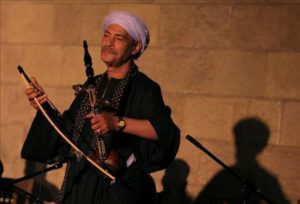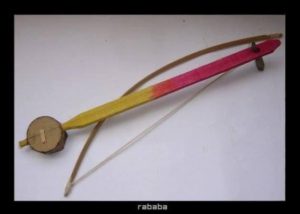Rababa
Rababa is a string musical instrument that used to be, originally, with one string played with a bow but nowadays there are various styles of it with more strings up to the player and his skills, although it is considered one of the oldest musical instruments in Egypt, it still has a strong presence in the gatherings of Samar and joys of every festive occasion and for entertaining. Rababa is essential for the folk teller of El Serra in the traditional coffee shops and no wedding ceremonies could be held without Rabab music. Crafting Rababa most of the time is done by its player with material from the environment; coconut shell, tree wood, and horse tail hair for the strings, the bow is made of bamboo and pomegranate as it is flexible and in some cases, they use palm tree reeds as it is always available in Upper Egypt governorates and it priceless. Historians, orientalists, and folklore scholars (since the 18th century) mentioned Rababa as the most famous musical instrument in the Arab world throughout the decades and it sustained the same social function and cultural meaning throughout the different eras with a slight change in the form but not in the function as a Sirra teller tool to tell the stories of Abu Zied in the coffee shops every night gathering the village men to follow the adventures and stay following the player and Sirra tellers from village to another. One of the significant Intangible Cultural Heritage of Upper Egypt was played usually by men and transmitted orally sometimes among family members, famous skilled players perform out of the local communities, and recently, the Official Cairo Orchestra hired community musicians who practice the rebab to combine between classical and folk music. Rababa is used by all the tourist sites in Egypt to welcome tourists and as a symbol of Egyptian Culture.




